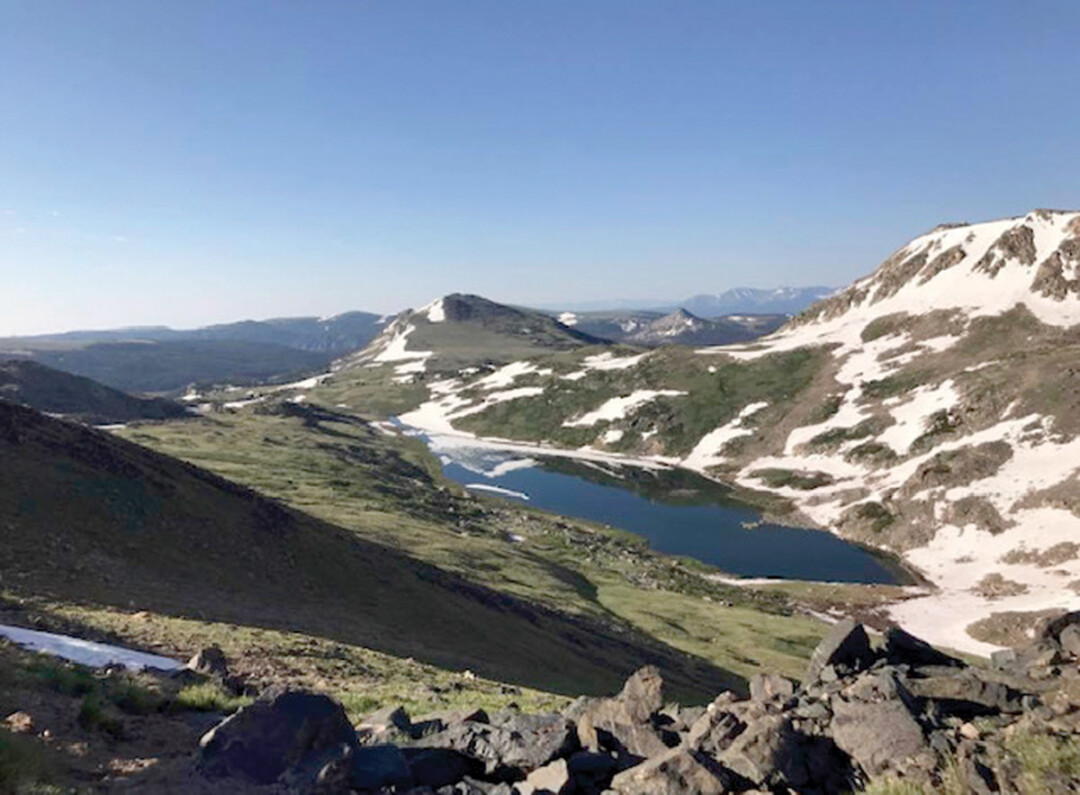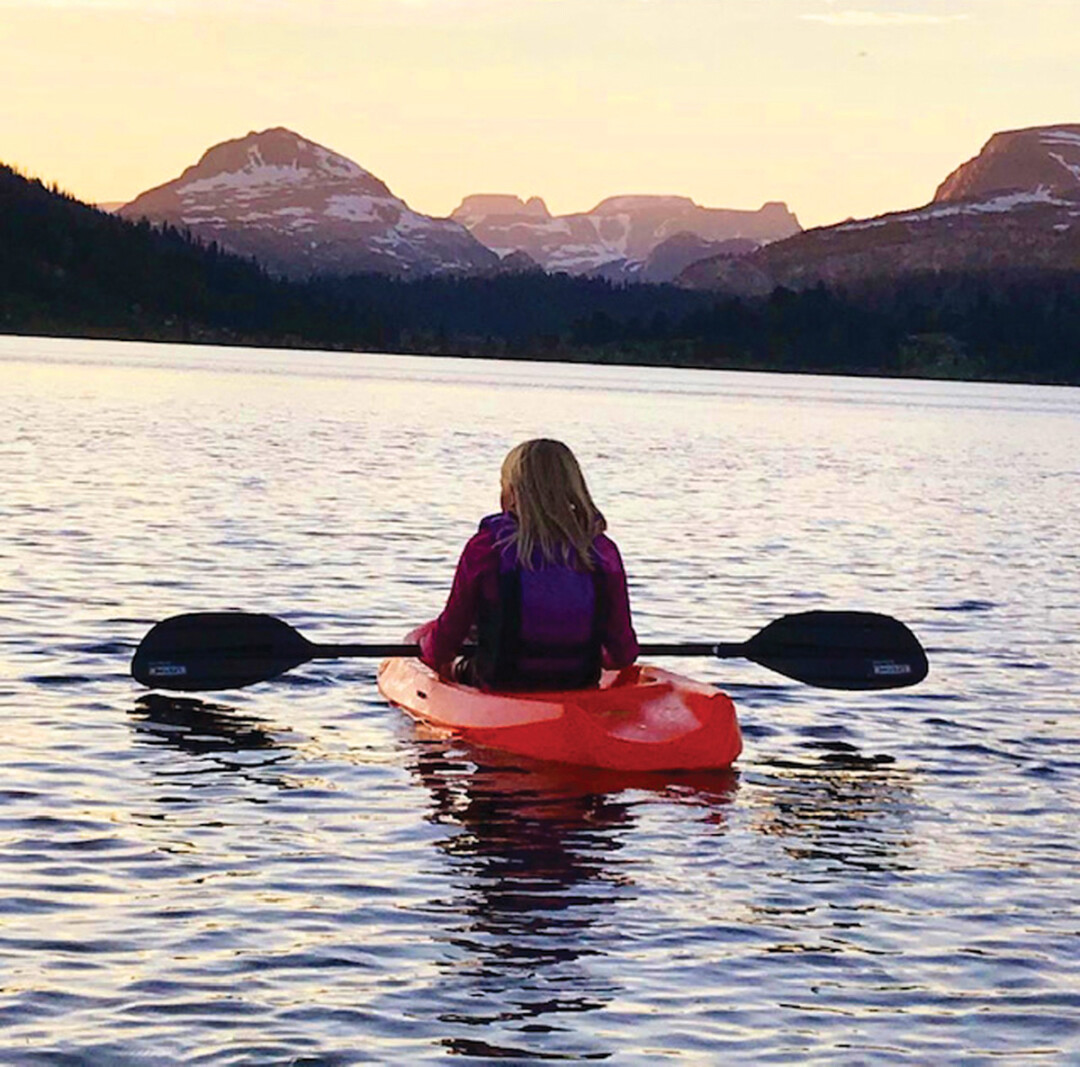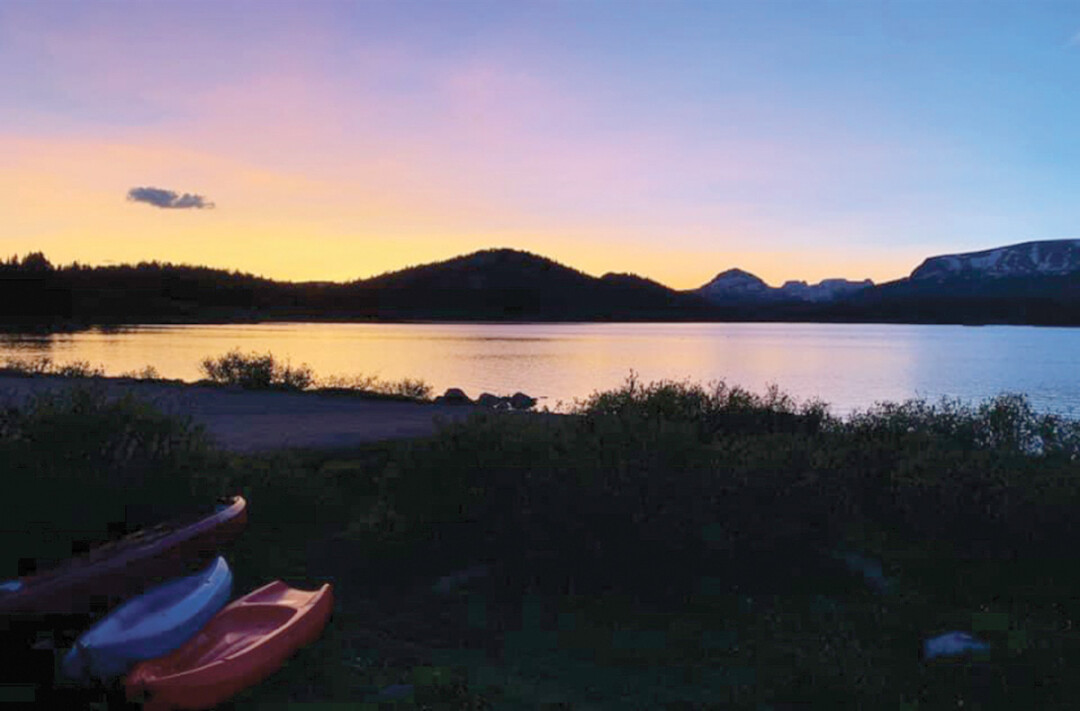A Biologist on the Beartooth
Monday Jun. 1st, 2020

About two hours east of Bozeman, you arrive at Red Lodge, Montana, and the beginning of the Beartooth Highway, which Charles Kuralt once called “America’s most beautiful highway.” The impetus for the road began in the early 1920s as automobiles became popular for touring Yellowstone Park. A Red Lodge physician began lobbying for a new approach to Yellowstone, and in 1925, the Black and White Trail Association received help from Montana Congressman Scott Leavitt. He was able to attach funding for a highway to a congressional bill called the Park Approach Act, which funded new improved routes to national parks. President Herbert Hoover signed the Leavitt Bill in 1931, and construction for the highway began. Four different companies completed construction and paving 1932-1936; CCC employees were used for special projects. The road was dedicated on June 14, 1936, and goes through spectacular mountain scenery carved by glaciers during the Ice Age and water chipping and eroding the rock into canyons.
The road goes over the Beartooth Plateau, part of a massive block of rock that was uplifted during the formation of the Rocky Mountains; it is adjacent the highest point in Montana, Granite Peak (12,799’) in the Beartooth Mountains. Streams have eroded the block into several separate plateaus – Beartooth, Line Creek, Froze-to-Death, Silver Run, and Hellroaring. Geologic forces building the Rockies formed mountains with peaks and valleys, and flat-topped plateaus – the plateaus are relatively rare. Trail Ridge Road in Rocky Mountain National Park is another familiar example of plateau topography with alpine meadows.
The road, Highway 212, follows Rock Creek south of Red Lodge (elevation about 5570’), and begins climbing a few miles out of town. As you climb, the west fork of Rock Creek becomes visible. It is a wide U-shaped valley, indicating that glaciers once oozed down from higher elevations, chipping away the sides of the valley as water froze and thawed. Where water cuts valleys, a more V-shaped valley is formed (like Hyalite or Gallatin Canyons). The sides of the switchbacks are somewhat stabilized by the vegetation that is growing – grasses, wildflowers, and subalpine fir with its sideways-growing lower branches. The rest stop toward the top of the switchbacks has a walkway, where you can walk out and see two other plateaus, Hellroaring and Silver Run, and the Wyoming Creek Canyon. The major tree here is whitebark pine; it frequently grows in clumps because the Clark’s nutcracker collects and caches the pine seeds for its winter food. When the bird forgets some of the seeds, little groups of the whitebark pine form.
At the top of the switchbacks (almost 10,000’), the true alpine meadows appear, punctuated with little patches of wind-battered Engelmann spruce, whitebark pine and subalpine fir. These trees frequently have branches only on one side so are called “flag trees.” Wind-blown snow and dust scour off the buds from which branches grow, so the branches only grow on the lee side of the trees. A twisted growth form is called krummholz, a term meaning “crooked wood,” and is typical of timberline trees.
The wildflowers are most abundant during the last of July and first of August. The plants in these meadows are about 50% the same as those in the Arctic tundra. Wind keeps these plants short (dwarf plants) or mound-shaped (cushion plants). In moist places, dwarf willows and heath plants are present. The vivid yellow dwarf plant that is most obvious is Geum rossii, mountain avens, in the rose family. The most common cushion plants are alpine forget-me-not (blue flowers) and moss campion (pink flowers). These plants are woody at their bases, and much branched. Getting down on one’s hands and knees is the only way to really study them.
The glaciers formed round bowls with steep sides called cirques, as ice chipped away the rock. Frequently little lakes (tarns) form as ice and snow meltwater collects at the bottom of the cirques. Gardner Lake and Twin Lakes, near the little ski area, are examples of these types of lakes. The bear’s tooth is visible off and on in many parts of the road; it was probably named by the local Native Americans, and is an example of a glacially cut matterhorn type of peak. It is part of the Beartooth Mountains.
The alpine meadows, mostly above timberline, are primarily in the Shoshone National Forest in Wyoming, and are present from the top of the switchbacks to Beartooth Pass, the highest point on the road (10,947’). A stop here is a must. The wildflowers are there, along with another semi-glacial feature, patterned ground, series of circular rock depositions. While the ground was still very wet after the glaciers melted, convection currents in the soil moved rock from the center of circles to the edges. The granite rock appears black because of lichen cover, indicating the rock is now stable and not moving. At the summit, a walk to the boulders on top may give a glimpse of one of the world’s cutest animals, the pika. This relative of rabbits does not hibernate, but lives all winter on the haystacks they build during the summer as they collect and build mounds of grass and flowers.
Other animals live on the plateau – grizzly bears, black bears, red fox, pocket gophers and shrews that live all winter underneath the snow, mountain sheep, many birds, fish planted by Wyoming Game and Fish in lakes– that you may see if you camp at one of the campgrounds. The animals most likely to be seen along the road are marmots among rocks and mountain goats in the alpine meadows. The goats are not native, having been planted in the adjacent Absaroka Mountains in the 1940s-1950s. They like to roll in the meadows, destroying vegetation and making depressions that the wind increases in size. They are being closely monitored close to Yellowstone because they might pass on diseases to the native mountain sheep.
Descending from Beartooth Pass, pink snow (watermelon snow) is usually visible. The pink color comes from little algae (Chlamydomonas) that live in the snow; they have a red eyespot that absorbs the sun’s heat and gives the cells the red color. The algae swim upwards in melting snow, and at the top of the snow they frequently form the red resting spores that indicate melting snow in the summer. This is not something to taste.
The rest of this road is below timberline, with some flag trees among boulders and forest stands of whitebark pine, lodgepole pine, Engelmann spruce, and at lower elevations extensive stands of aspen. Island Lake is notable for its campground and lovely setting. Two buttes, Beartooth Butte by Beartooth Lake and Clay Butte with its fire lookout, are evidence that this area was once under water. These buttes are sedimentary rock, and Beartooth Butte has fish and plant fossils from the Paleocene (era before the dinosaurs).
Toward Cooke City, the road parallels Clark’s Fork of the Yellowstone, a designated Wild and Scenic River. Its lovely canyon is only visible when you park the car and get out to an overlook. The Clark’s Fork Valley closer to Cooke City has dude ranches and a cabin where Ernest Hemingway once lived and wrote about living in the valley. Two prominent peaks are Pilot and Index, classic glacier-cut matterhorn peaks with a sharp ridge in between them. Hemingway wrote about climbing around on the jagged peaks while hunting mountain sheep.
The road re-enters Montana and the Custer-Gallatin National Forest near Cooke City. The campgrounds are in dense Engelmann spruce forests, some of which burned close to Cooke City in the 1988 Yellowstone fires. Silver Gate at the entrance of Yellowstone is the end of the “Beartooth Highway.” The influence of the glaciers from the Beartooth Plateau continues down the Lamar Valley in Yellowstone Park; the large granite boulders in the meadows were deposited there by the glaciers that flowed down the valley from the plateau during the Ice Age.
Sharon Eversman retired from the Ecology Department at MSU where she taught many different botany and biology courses for nearly 40 years. One of the courses was Alpine Ecology, which focused on the Beartooth Plateau, including a week end field trip. Her main research interest was lichens of the Bozeman and Yellowstone areas. Currently she is a docent at the Museum of the Rockies and a violinist with the Bozeman Symphony.
| Tweet |